Ranger Hybrid
More power to you
Ranger Hybrid
More power to you
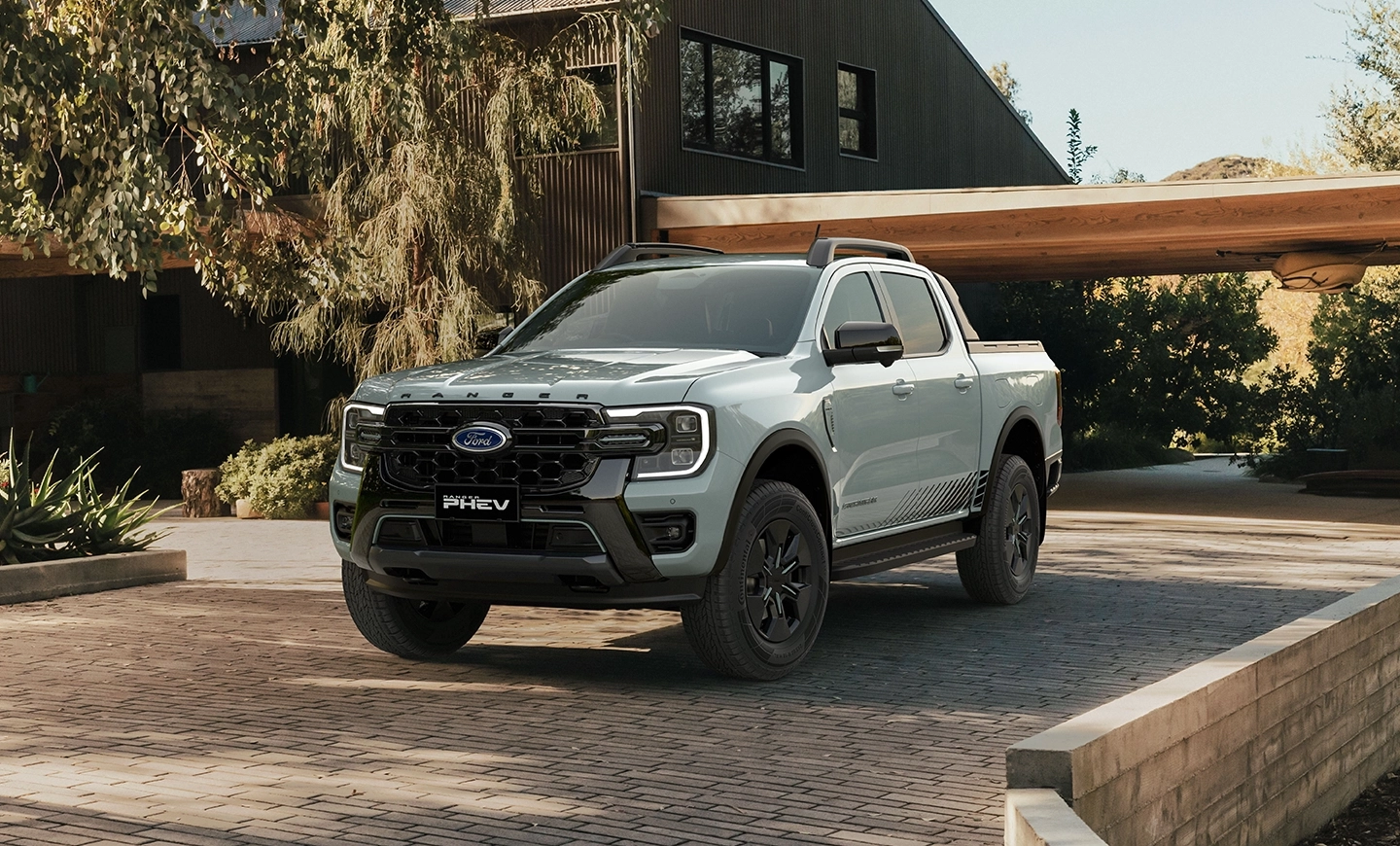
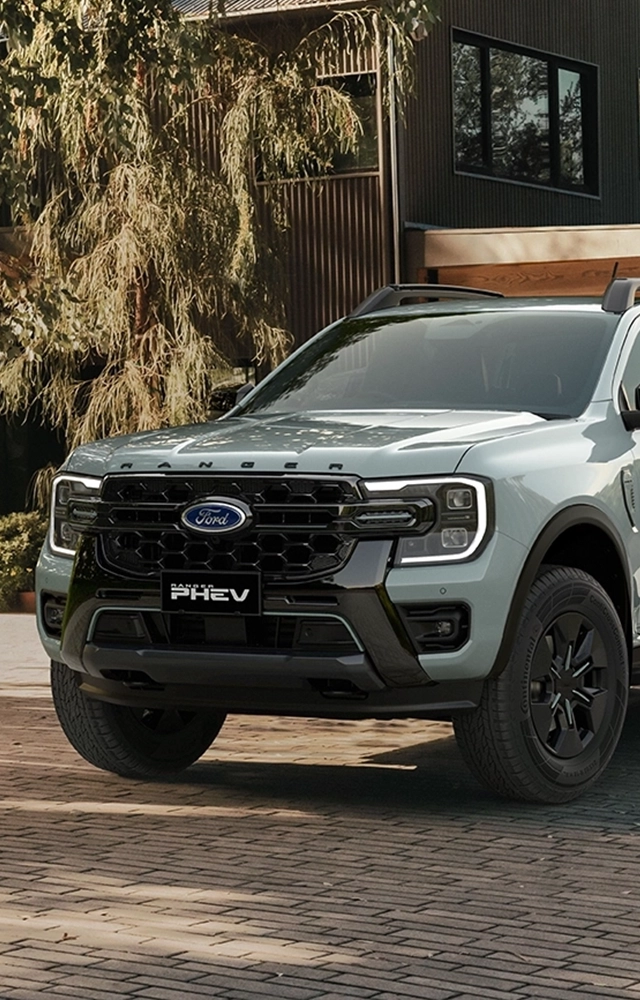
Ranger Hybrid
More power to you
Ranger Hybrid
More power to you
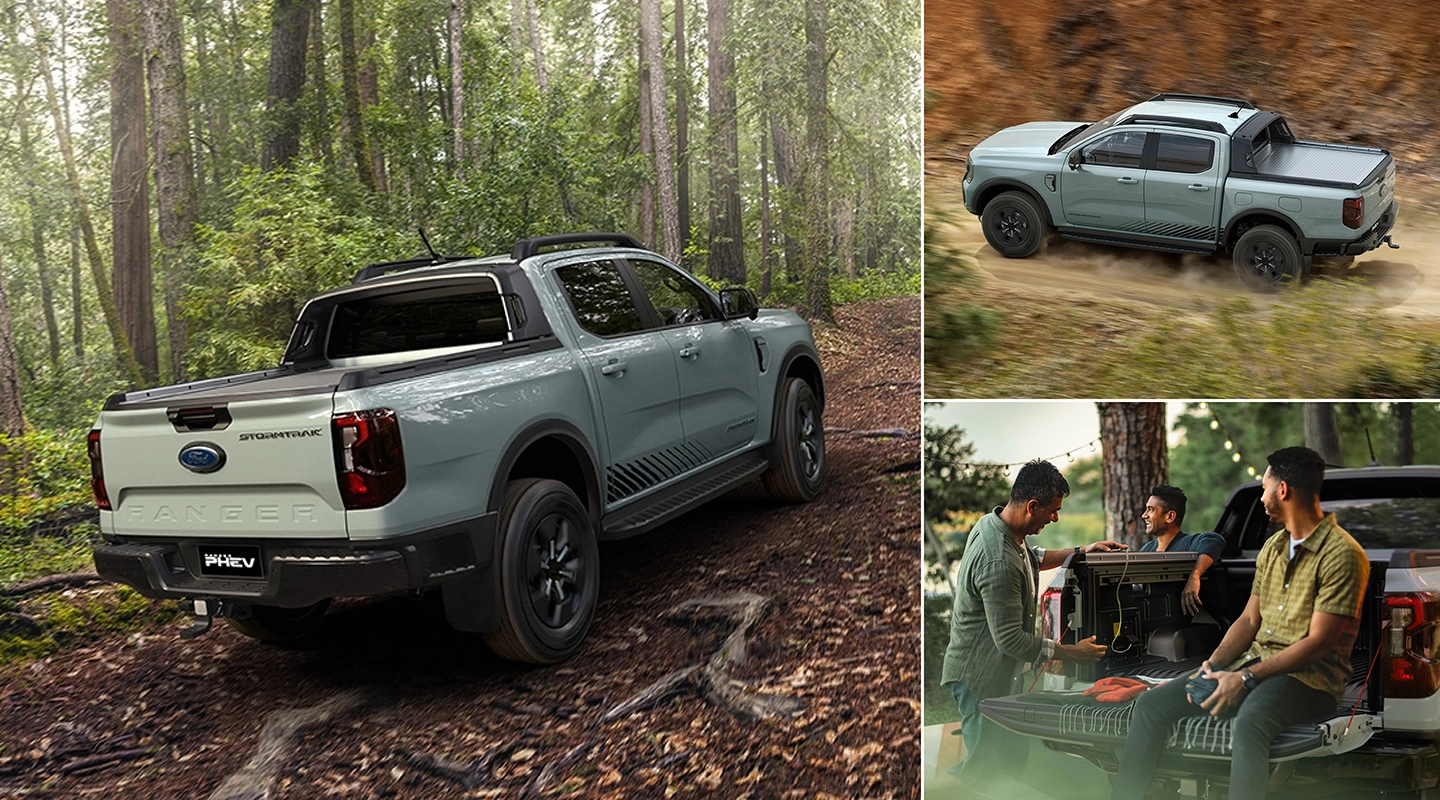
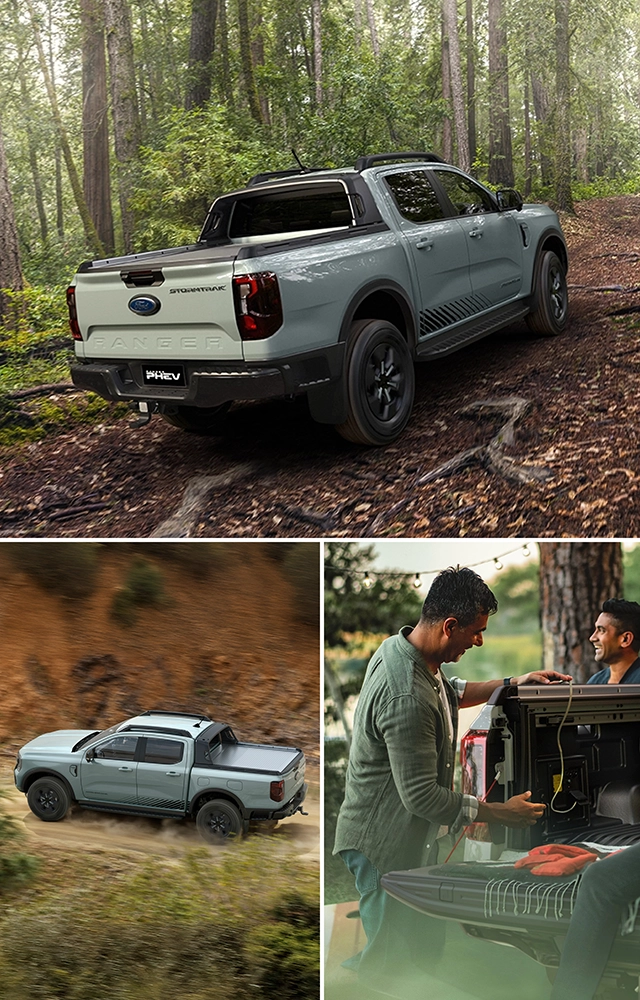
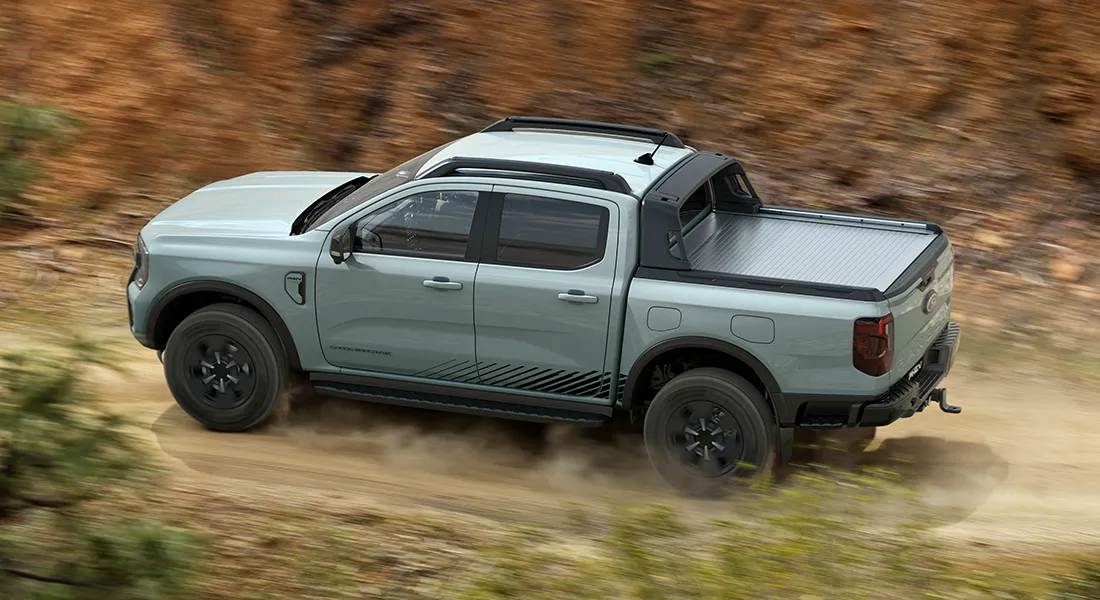
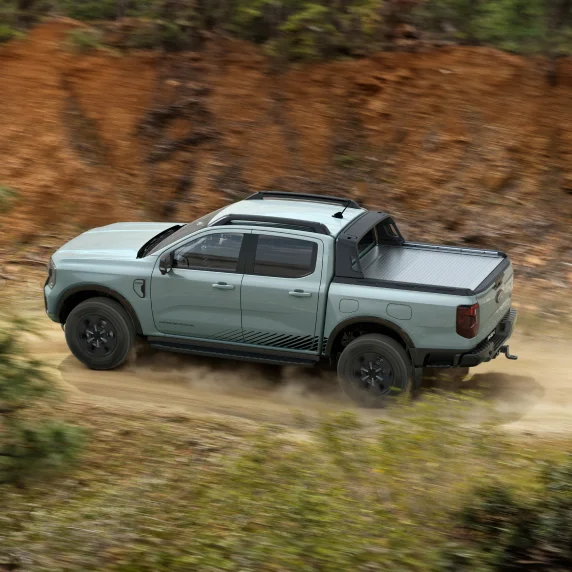
With a distinctive Chill Grey colour, Hybrid Stormtrak has an electrifying off-road presence, with unique decals and a custom interior design. Plus, the Flexible Rack System1 comes as standard. It’s lightning-hot with thunderous capability.
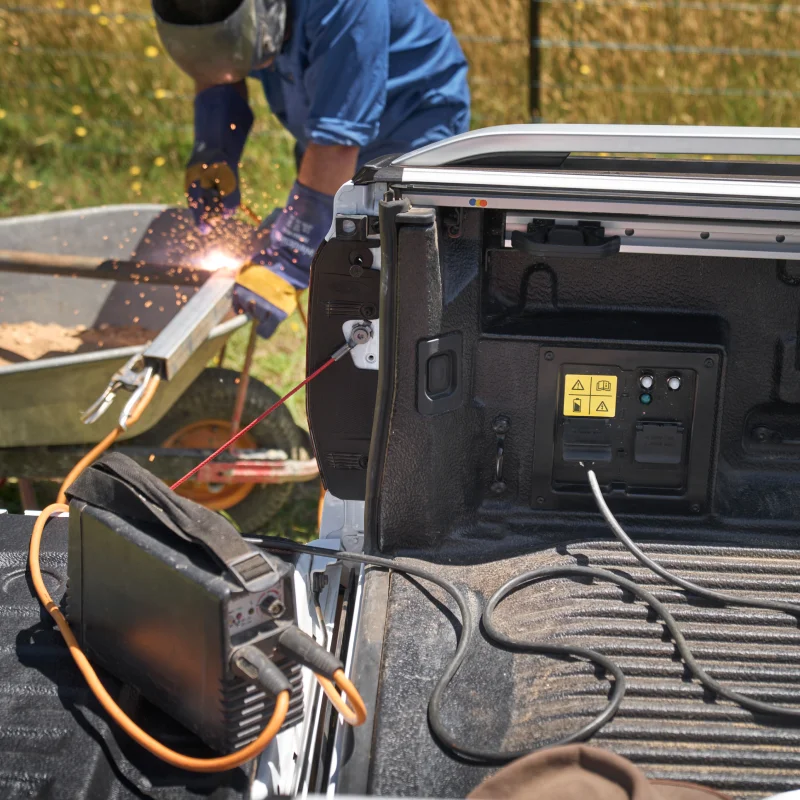


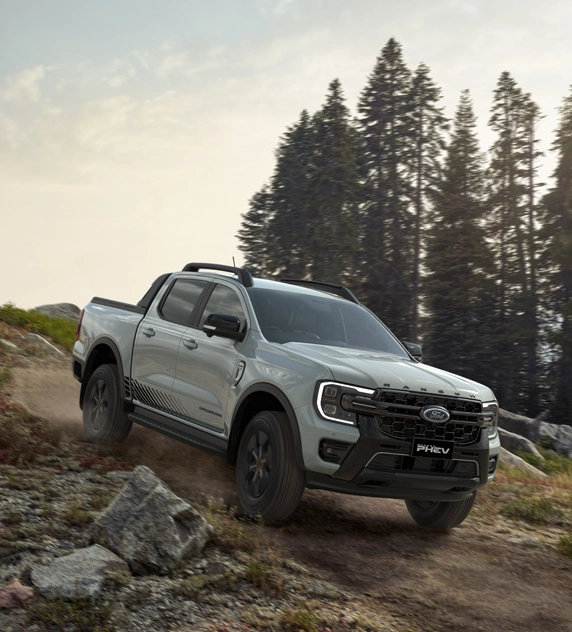
To meet legendary standards of Ford tough, strength needs to be met with dependability. For Ranger Hybrid, internal combustion engine pairs hybrid technology with a durable chassis, creating a truck built for versatile demands.
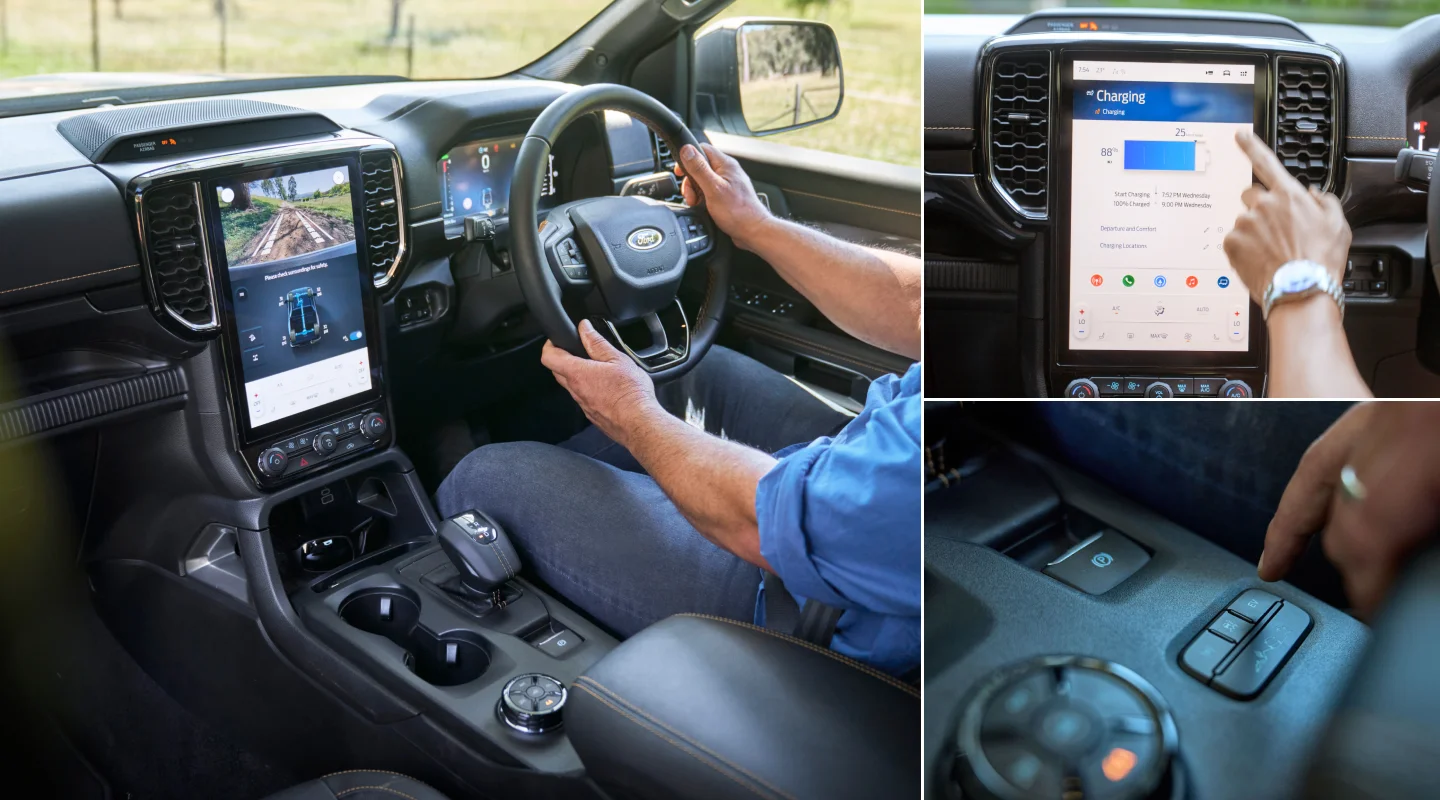

Thanks to Ranger Hybrid’s combination of petrol and electric-only driving, its overall fuel economy is much lower than other utes, at 2.9L/100km3 combined average. And, if you’re running a fleet, you can really notice how it all adds up.

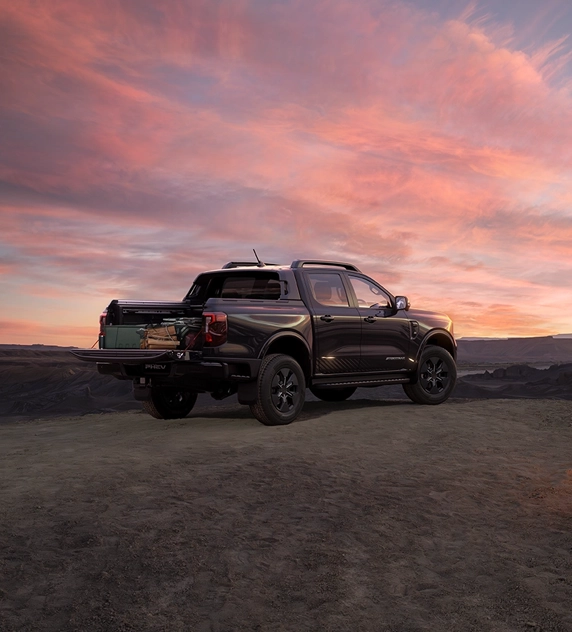
We’ve added 4 EV drive modes to optimise flexibility and versatility. ‘Auto EV’ makes the decision for you. 'EV Now' runs purely on electric power, reducing fuel consumption. ‘EV Later’ preserves battery charge for later use. Finally, ‘EV Charge’ uses the engine to top-up your battery while on.
We’ve added 4 EV drive modes to optimise flexibility and versatility. ‘Auto EV’ makes the decision for you. 'EV Now' runs purely on electric power, reducing fuel consumption. ‘EV Later’ preserves battery charge for later use. Finally, ‘EV Charge’ uses the engine to top-up your battery while on.
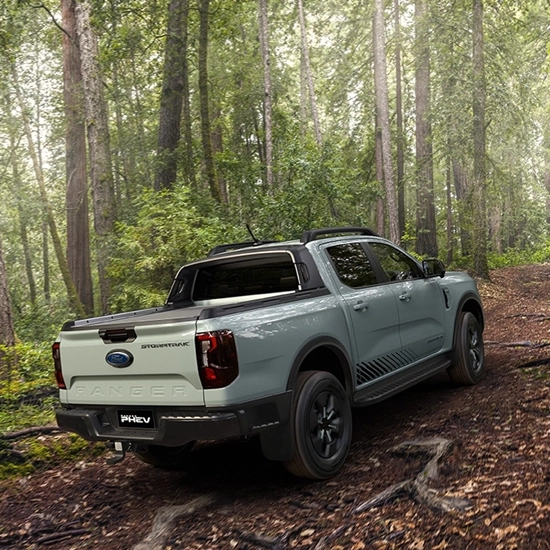

When approaching slippery, sandy, or muddy conditions6, there’s a drive mode you can turn to. And, if you want extra power to haul or increased performance, Tow and the added Sports mode will give you what you need.
Plug-in Hybrid Vehicle (PHEV) combines a conventional internal combustion engine with a battery-powered electric motor that is charged using an external charging point or while you are driving through the engine and regenerative braking. You can learn more about PHEV technology here.
Plug-in Hybrid Vehicle (PHEV) combines a conventional internal combustion engine with a battery-powered electric motor that is charged using an external charging point or while you are driving through the engine and regenerative braking. You can learn more about PHEV technology here.
Plug-in Hybrid Vehicle (PHEV) combines a conventional internal combustion engine with a battery-powered electric motor that is charged using an external charging point or while you are driving through the engine and regenerative braking. You can learn more about PHEV technology here.
Plug-in Hybrid Vehicle (PHEV) combines a conventional internal combustion engine with a battery-powered electric motor that is charged using an external charging point or while you are driving through the engine and regenerative braking. You can learn more about PHEV technology here.
Flexible Rack System has a maximum load limit 80kg (dynamic) and 250kg (static) with load evenly distributed across all bars. Manual set-up required. Removal of antenna mast recommended when cargo positioned over antenna. Removal may affect availability of radio, satellite and connected services.
Pro Power Onboard offers up to a maximum total power output of 6.9kW in the Ranger Hybrid range. The total power output may be 6.9kW or less depending on variant and configuration and will be confirmed closer to on-sale date. Pro Power Onboard has three power outlets-one in cabin and two in load box. 2.3kW limit on cabin and 3.45kW limit on each load box outlet provided there is a maximum power output of up to 6.9kW. 2.3kW limit on each outlet when all outlets are used simultaneously provided there is a maximum power output of up to 6.9kW. Pro Power Onboard may not sufficiently power all equipment and its use will decrease battery charge. Speak to your Ford dealer for information.
Fuel consumption and emissions as per WLTP3 (combined cycle) and to be used for vehicle comparison purposes only. It is unlikely that these fuel consumption and emissions figures will be achieved in real world driving conditions. Actual fuel consumption and emissions will depend on many factors including the driver’s habits, prevailing conditions and the vehicle’s equipment, options and accessories, condition and use.
Maximum towing capacity braked using a Genuine Ford tow pack optional at additional cost. Subject to State and Territory regulations. To comply with these limits, any load transported by the vehicle may need to be restricted to not exceed the GCM and GVM limits. For further details regarding load restrictions, please consult your authorised Ford Dealer and / or refer to the vehicle brochure and owner's manual.
Payload is calculated by deducting the vehicle’s Kerb Weight from its Gross Vehicle Mass (GVM). Payload (based on Kerb Weight) is the maximum combined value of occupants, cargo, added accessories, added structures and tow ball download (when towing). Vehicle weights are approximate and subject to individual variances. Vehicles should be weighed before and after adding additional load, accessories or towing a trailer to ensure the maximum Gross Vehicle Mass (GVM), Gross Combined Mass (GCM) and Gross Axle Weight Ratings are not exceeded.
Mud / Sand Mode intended for off-road use only.
Maximum water wading 800mm maintaining steady speed of 7km/h or less. Always consult the Owner's Manual before off-road driving, know your terrain and trail difficulty, and use appropriate safety gear. Do not attempt a water crossing if you are unsure of the water depth.
Emissions as per WLTP2 (combined cycle) are to be used for vehicle comparison purposes only. It is unlikely that these emissions figures will be achieved in real world driving conditions. Actual emissions will depend on many factors including the driver’s habits, use of petrol or electric-only driving modes, prevailing conditions and the vehicle’s equipment, options and accessories, condition and use.
Flexible Rack System has a maximum load limit 80kg (dynamic) and 250kg (static) with load evenly distributed across all bars. Manual set-up required. Removal of antenna mast recommended when cargo positioned over antenna. Removal may affect availability of radio, satellite and connected services.
Pro Power Onboard offers up to a maximum total power output of 6.9kW in the Ranger Hybrid range. The total power output may be 6.9kW or less depending on variant and configuration and will be confirmed closer to on-sale date. Pro Power Onboard has three power outlets-one in cabin and two in load box. 2.3kW limit on cabin and 3.45kW limit on each load box outlet provided there is a maximum power output of up to 6.9kW. 2.3kW limit on each outlet when all outlets are used simultaneously provided there is a maximum power output of up to 6.9kW. Pro Power Onboard may not sufficiently power all equipment and its use will decrease battery charge. Speak to your Ford dealer for information.
Fuel consumption and emissions as per WLTP3 (combined cycle) and to be used for vehicle comparison purposes only. It is unlikely that these fuel consumption and emissions figures will be achieved in real world driving conditions. Actual fuel consumption and emissions will depend on many factors including the driver’s habits, prevailing conditions and the vehicle’s equipment, options and accessories, condition and use.
Maximum towing capacity braked using a Genuine Ford tow pack optional at additional cost. Subject to State and Territory regulations. To comply with these limits, any load transported by the vehicle may need to be restricted to not exceed the GCM and GVM limits. For further details regarding load restrictions, please consult your authorised Ford Dealer and / or refer to the vehicle brochure and owner's manual.
Payload is calculated by deducting the vehicle’s Kerb Weight from its Gross Vehicle Mass (GVM). Payload (based on Kerb Weight) is the maximum combined value of occupants, cargo, added accessories, added structures and tow ball download (when towing). Vehicle weights are approximate and subject to individual variances. Vehicles should be weighed before and after adding additional load, accessories or towing a trailer to ensure the maximum Gross Vehicle Mass (GVM), Gross Combined Mass (GCM) and Gross Axle Weight Ratings are not exceeded.
Mud / Sand Mode intended for off-road use only.
Maximum water wading 800mm maintaining steady speed of 7km/h or less. Always consult the Owner's Manual before off-road driving, know your terrain and trail difficulty, and use appropriate safety gear. Do not attempt a water crossing if you are unsure of the water depth.
Emissions as per WLTP2 (combined cycle) are to be used for vehicle comparison purposes only. It is unlikely that these emissions figures will be achieved in real world driving conditions. Actual emissions will depend on many factors including the driver’s habits, use of petrol or electric-only driving modes, prevailing conditions and the vehicle’s equipment, options and accessories, condition and use.
Flexible Rack System has a maximum load limit 80kg (dynamic) and 250kg (static) with load evenly distributed across all bars. Manual set-up required. Removal of antenna mast recommended when cargo positioned over antenna. Removal may affect availability of radio, satellite and connected services.
Pro Power Onboard offers up to a maximum total power output of 6.9kW in the Ranger Hybrid range. The total power output may be 6.9kW or less depending on variant and configuration and will be confirmed closer to on-sale date. Pro Power Onboard has three power outlets-one in cabin and two in load box. 2.3kW limit on cabin and 3.45kW limit on each load box outlet provided there is a maximum power output of up to 6.9kW. 2.3kW limit on each outlet when all outlets are used simultaneously provided there is a maximum power output of up to 6.9kW. Pro Power Onboard may not sufficiently power all equipment and its use will decrease battery charge. Speak to your Ford dealer for information.
Fuel consumption and emissions as per WLTP3 (combined cycle) and to be used for vehicle comparison purposes only. It is unlikely that these fuel consumption and emissions figures will be achieved in real world driving conditions. Actual fuel consumption and emissions will depend on many factors including the driver’s habits, prevailing conditions and the vehicle’s equipment, options and accessories, condition and use.
Maximum towing capacity braked using a Genuine Ford tow pack optional at additional cost. Subject to State and Territory regulations. To comply with these limits, any load transported by the vehicle may need to be restricted to not exceed the GCM and GVM limits. For further details regarding load restrictions, please consult your authorised Ford Dealer and / or refer to the vehicle brochure and owner's manual.
Payload is calculated by deducting the vehicle’s Kerb Weight from its Gross Vehicle Mass (GVM). Payload (based on Kerb Weight) is the maximum combined value of occupants, cargo, added accessories, added structures and tow ball download (when towing). Vehicle weights are approximate and subject to individual variances. Vehicles should be weighed before and after adding additional load, accessories or towing a trailer to ensure the maximum Gross Vehicle Mass (GVM), Gross Combined Mass (GCM) and Gross Axle Weight Ratings are not exceeded.
Mud / Sand Mode intended for off-road use only.
Maximum water wading 800mm maintaining steady speed of 7km/h or less. Always consult the Owner's Manual before off-road driving, know your terrain and trail difficulty, and use appropriate safety gear. Do not attempt a water crossing if you are unsure of the water depth.
Emissions as per WLTP2 (combined cycle) are to be used for vehicle comparison purposes only. It is unlikely that these emissions figures will be achieved in real world driving conditions. Actual emissions will depend on many factors including the driver’s habits, use of petrol or electric-only driving modes, prevailing conditions and the vehicle’s equipment, options and accessories, condition and use.
Flexible Rack System has a maximum load limit 80kg (dynamic) and 250kg (static) with load evenly distributed across all bars. Manual set-up required. Removal of antenna mast recommended when cargo positioned over antenna. Removal may affect availability of radio, satellite and connected services.
Pro Power Onboard offers up to a maximum total power output of 6.9kW in the Ranger Hybrid range. The total power output may be 6.9kW or less depending on variant and configuration and will be confirmed closer to on-sale date. Pro Power Onboard has three power outlets-one in cabin and two in load box. 2.3kW limit on cabin and 3.45kW limit on each load box outlet provided there is a maximum power output of up to 6.9kW. 2.3kW limit on each outlet when all outlets are used simultaneously provided there is a maximum power output of up to 6.9kW. Pro Power Onboard may not sufficiently power all equipment and its use will decrease battery charge. Speak to your Ford dealer for information.
Fuel consumption and emissions as per WLTP3 (combined cycle) and to be used for vehicle comparison purposes only. It is unlikely that these fuel consumption and emissions figures will be achieved in real world driving conditions. Actual fuel consumption and emissions will depend on many factors including the driver’s habits, prevailing conditions and the vehicle’s equipment, options and accessories, condition and use.
Maximum towing capacity braked using a Genuine Ford tow pack optional at additional cost. Subject to State and Territory regulations. To comply with these limits, any load transported by the vehicle may need to be restricted to not exceed the GCM and GVM limits. For further details regarding load restrictions, please consult your authorised Ford Dealer and / or refer to the vehicle brochure and owner's manual.
Payload is calculated by deducting the vehicle’s Kerb Weight from its Gross Vehicle Mass (GVM). Payload (based on Kerb Weight) is the maximum combined value of occupants, cargo, added accessories, added structures and tow ball download (when towing). Vehicle weights are approximate and subject to individual variances. Vehicles should be weighed before and after adding additional load, accessories or towing a trailer to ensure the maximum Gross Vehicle Mass (GVM), Gross Combined Mass (GCM) and Gross Axle Weight Ratings are not exceeded.
Mud / Sand Mode intended for off-road use only.
Maximum water wading 800mm maintaining steady speed of 7km/h or less. Always consult the Owner's Manual before off-road driving, know your terrain and trail difficulty, and use appropriate safety gear. Do not attempt a water crossing if you are unsure of the water depth.
Emissions as per WLTP2 (combined cycle) are to be used for vehicle comparison purposes only. It is unlikely that these emissions figures will be achieved in real world driving conditions. Actual emissions will depend on many factors including the driver’s habits, use of petrol or electric-only driving modes, prevailing conditions and the vehicle’s equipment, options and accessories, condition and use.